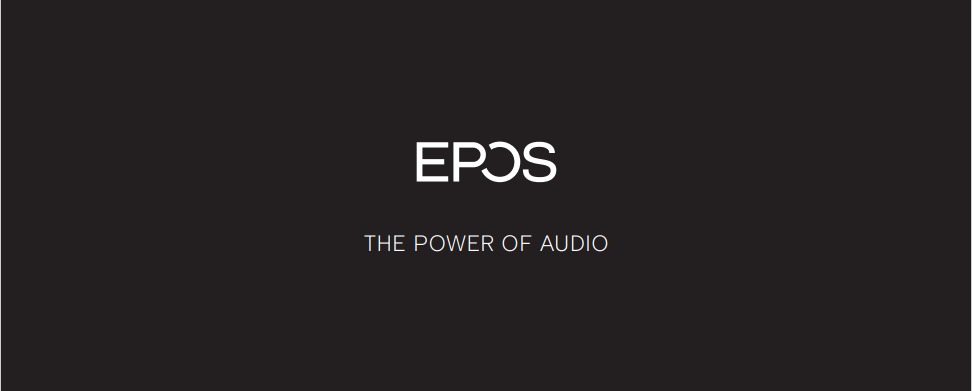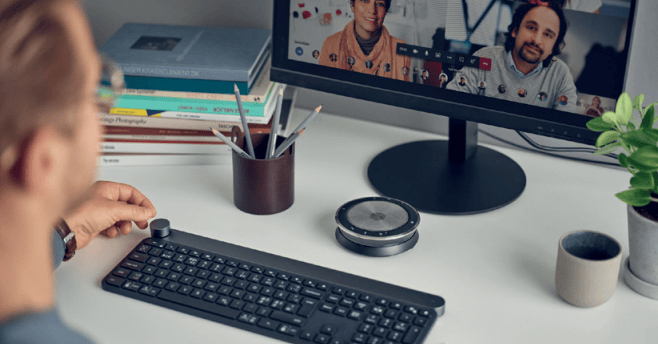
Since early 2020, businesses worldwide have been forced to cope with significant disruption. While this has certainly created challenges, many business leaders also agree that the sudden mainstream switch to remote work caused by the COVID 19 pandemic has provided an indelible insight into the opportunities of hybrid working they may not have seen otherwise.
While precise definitions of hybrid working may vary the consensus among global leaders is that there will be no return to a 100% in-office model – instead employees will continue to split their time between the physical workplace and working remotely.
Today, many business leaders are embracing a permanent shift to hybrid working, but to make the model truly successful in the mid to long-term we need to learn from experience to date.
In particular - the pain points of remote working. It’s only then that business leaders can prepare and invest in the technology needed to make a confident and successful shift to a fully optimized hybrid model that works for businesses and employees alike.
Audio technology has played a major part in the remote working experience: research by Ipsos commissioned by global audio brand EPOS showed that in 2021 the average worker spends over 7 hours a week on activities related to sound and meetings, an increase of two hours compared with 2020. As lockdowns begin to ease worldwide, forward thinking leaders must consider the role of audio technology in supporting new hybrid set-ups and investing in solutions that will empower employees and create flexibility that drives business goals.

Attitudes to how the hybrid workplace will work practically vary. There is a palpable discrepancy between the expectations of business leaders and employees today when it comes to where people will be working in the future.
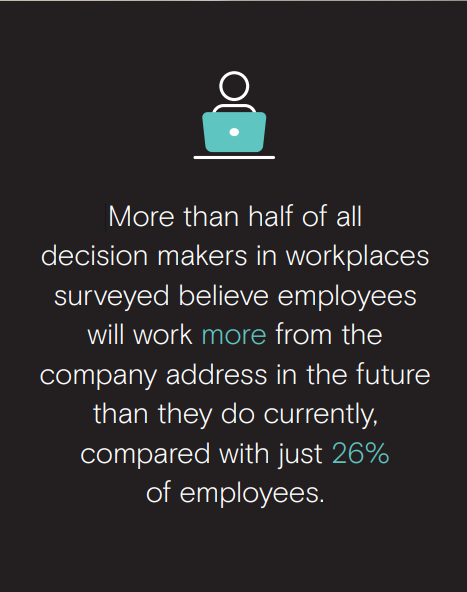
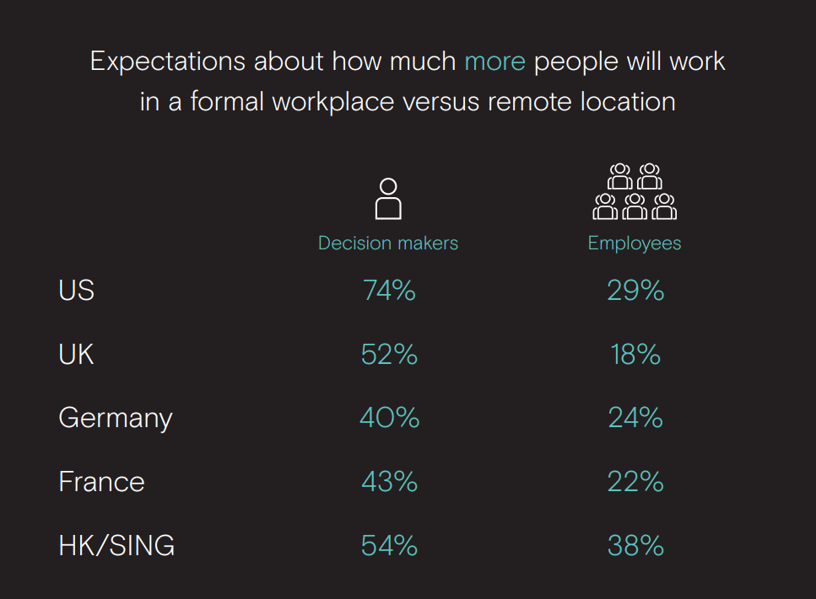
Adjustment anxiety may be part of the explanation for this. For some employees the prospect of venturing back into a physical working environment is something is worrying and this can potentially fuel a reluctance to return. In the US, for instance, 49% of adults report feeling uneasy about adjusting to in-person interactions once the pandemic ends. A hybrid set-up is one way to address this and help close the gap between employees and leaders’ expectations.
The benefits of hybrid working are well recognized. Flexibility inherent in the model allows for employees to work at a time and place they feel most productive. It widens the talent pool beyond physical proximity to a physical office and it allows multi-location collaboration – this ensures that the best talent can be secured for a role, regardless of geography.
For businesses to thrive in the post-pandemic era, business decision-makers will need to adjust expectations and set ups to optimize the hybrid working model in order to unlock employee productivity and empower employees to make the most of the hybrid model, particularly when it comes to work and life balance. Ultimately, a more flexible approach that allows people to work seamlessly, whether in the office, at home, or on-the-go makes sense.
Employees are more likely now to expect employers to provide the tools to support hybrid working in the long-term. 90% of decision makers state they provide or financially support equipment for employees working from home. But many employees still cite issues with technology causing stress when working from home. 89% Of all end-users currently experience challenges when having virtual meetings and 63% regularly experience issues due to poor sound quality on calls. If businesses are moving to hybrid for good.
For a hybrid working model to be at its most effective, old set-ups need to be adapted and businesses need to evolve. The top benefit cited by all end-users of video meetings or conference calls over physical meetings is cost saving. And for those moving to a hybrid model, reduced staff numbers in offices provides for the option of downsizing, meaning the potential for even more cost efficiency. These savings give companies the opportunity to invest in hybrid.
Now is the time to consider what the working day looks like for employees: to re-purpose the office space, provide the right kit for homeworking spaces and invest in technology that allows workers to switch seamlessly between the home, office, and other locations.
Happily, many decision-makers are already recognizing this: 86% of decision-makers globally are planning to invest in audio in the next year. And many say the experience of remote working in the last year has impacted this: 32% more employees will be offered headsets or personal speakerphone, as a result.
The most effective investments will be those that recognize the specific needs of employees and the wider business:
Getting it wrong can lead to bad audio experiences and that comes at a cost. 20% of global respondents surveyed say that bad audio caused dissatisfaction to clients and 15% had even lost a client because of bad audio experiences - creating a direct financial impact. Asking the right questions now and listening to employees needs will help business leaders make the right investments for the hybrid working environment.
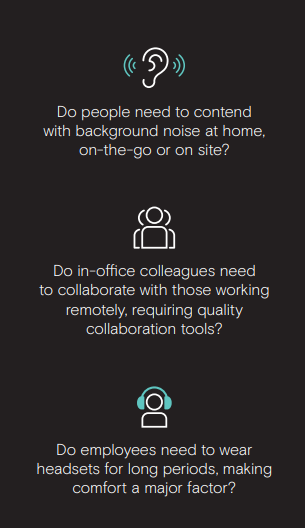

As more of us return to the office, working on-the-go is set to return. While commuting significantly reduced during COVID-19 lockdowns, many people will now want to make their train, drive, or walk to work a productive one. Business travel and a return to shared working spaces is also set to return.
Before the pandemic, 25% of people surveyed were working on their commute daily, and a further 19% on a weekly basis. So, while the hybrid model may mean fewer people commuting every day, the desire to work on-the-go is unlikely to change and businesses should enable those who want to work on the-go with the best possible tools to do so.
Comfort, ease of use and audio quality are all major factors affecting the use of headsets.
The biggest barrier for not using headsets is comfort (45% of users) while 37% said it was inconvenient and 26% said bad audio quality put them off.
For those switching regularly between home, office and elsewhere, flexible audio solutions enable them to make the most of their time. The ability to take a call at a busy station or airport, in comfort and without background distractions gives end users the confidence to know they can be completely professional and focused, anytime, and anywhere. Smart businesses will seek solutions that answer the users pain points, prioritizing comfort, usability, and audio quality.
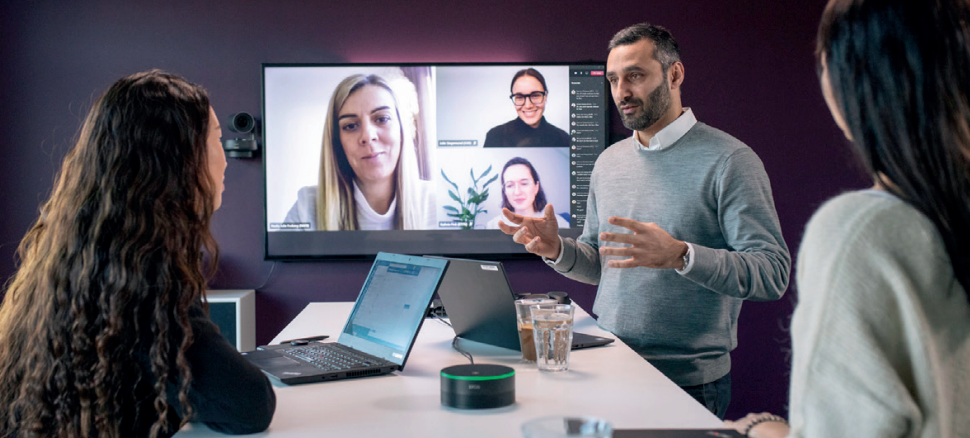
While the majority of respondents surveyed expected to have fewer virtual calls and meetings and more face-to-face interactions in the future, the benefits of virtual meetings are well recognized, and they will remain a significant part of working life in our hybrid world. Time savings, cost savings and the freedom to work anywhere are cited as the biggest benefits. But other factors, such as the ability to create electronic shared documents (28%) and the ability to record and share sessions (24%) were all benefits our survey respondents recognized.
As we move to a hybrid set-up, meetings themselves are likely to become a hybrid experience. The technology already exists to host meetings that connect an in-office group, with others working remotely, or a second in-office group at another location. The benefit of this flexibility is clear: global colleagues and customers can connect, and the growing confidence and comfort levels of professionals working in this way means meetings of this kind are likely to increase.
As the hybrid model matures, video collaborations solutions will become integral to enabling the digital workforce to become more collaborative, instantaneous, and intimate. For businesses tomorrow, quality video and audio solutions will become the bedrock upon which they build essential human connections, and future innovations.
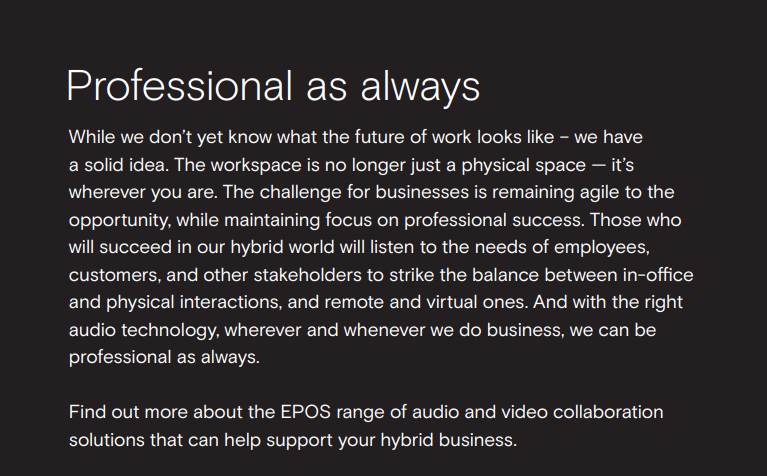
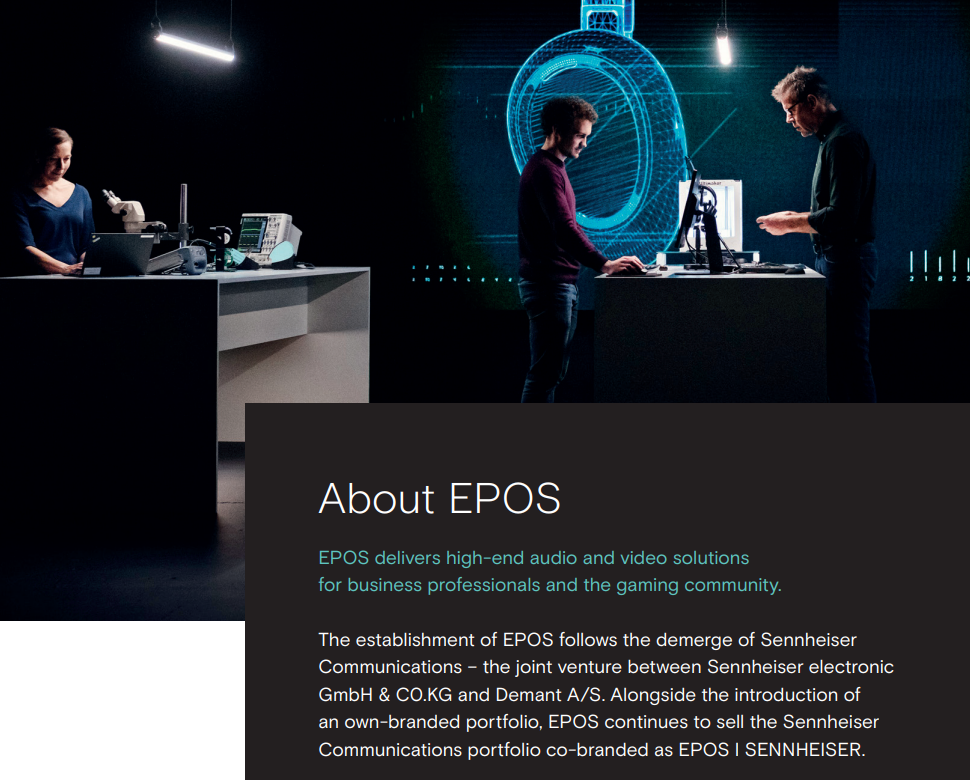
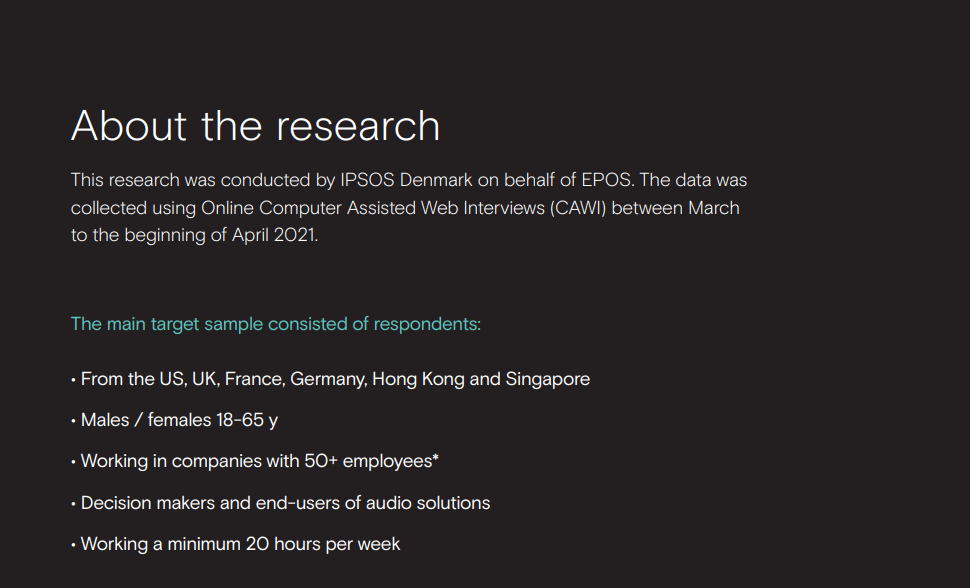
*Due to a very low incident rate for end-users call centric in all countries, the criteria for company size was relaxed and companies with 10-49 employees accepted. 63 respondents (2,5%) out of the total sample.
